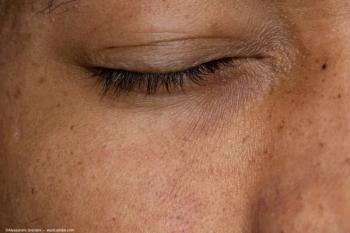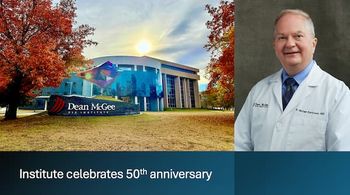
Advanced features enhance phaco safety and efficiency
Washington, DC—Results of studies measuring energy used during cataract removal by phacoemulsification provide convincing evidence that the Infiniti Vision system (Alcon Laboratories) is a significant advance in optimizing surgical safety and efficiency, said Richard J. Mackool, MD, at the annual meeting of the American Society of Cataract and Refractive Surgery.
Dr. Mackool presented data from a study he conducted evaluating the amount of energy required for cataract removal in a consecutive series of 50 eyes that underwent surgery with the Infiniti system operating at low-power burst mode with a 30-μsec "on time" and 50-μsec "off time." He compared those results with outcomes from an earlier study in which groups of 50 eyes each underwent surgery using four different technologies-linear phaco with the Legacy (Alcon) or AdvanTec Legacy (Alcon), or burst mode phaco with the AdvanTec Legacy at 60% or 30% (low) power.
The data showed that the energy usage decreased progressively as the ultrasound technology has evolved in sophistication. Impressively, there was a dramatic 84% reduction in the amount of energy delivered into the eye during procedures performed with the Infiniti Vision system relative to linear ultrasound with the Legacy, he said.
In his studies, Dr. Mackool rated nuclear density at the end of each procedure, and the mean values were comparable for all of the surgical groups.
The amount of energy required for nucleus removal was measured using a value of "relative energy," which he calculated as the product of the time the tip is vibrating multiplied by the average percent power. In Dr. Mackool's initial four-arm comparison study, linear ultrasound with the Legacy was associated with the highest mean relative energy usage (29%). Relative to that value, incremental reductions were achieved moving to the AdvanTec Legacy with linear ultrasound (–34%), then with burst mode at 60% power (–39%), and finally with low-power burst mode (–60%). Using the Infiniti Vision system, the mean relative energy used was only 4.6%, which represents an 84% decrease from the mean energy used in procedures performed with the Legacy system.
Dr. Mackool explained that the benefit seen when performing linear ultrasound with the AdvanTec Legacy compared with the Legacy is due to the superior ability of the AdvanTec system to maintain the phaco tip stroke length across the entire power range.
"If the surgeon is forced to depress the pedal further in order to maintain stroke length (power) to remove nuclear material that is at the tip because the system cannot maintain stroke length, the tip will vibrate wildly and release a tremendous amount of energy into the eye as soon as the nuclear material is cleared and there is no "load" at the tip to limit stroke length. With the AdvanTec Legacy, stroke length was maintained regardless of the amount and density of nuclear material at the tip," Dr. Mackool explained.
Burst mode introduced
The AdvanTec Legacy also introduced burst mode, which provided an additional benefit for minimizing energy usage, and efficiency increased more with low-power burst mode.
Like the AdvanTec Legacy, the Infiniti offers low power burst mode and maintains stroke length when the tip is under load, according to Dr. Mackool. However, it is capable of using about 50% higher vacuum, which reduces energy usage by allowing more of the nucleus to be removed with aspiration forces only, he said.
Newsletter
Don’t miss out—get Ophthalmology Times updates on the latest clinical advancements and expert interviews, straight to your inbox.


















































.png)


